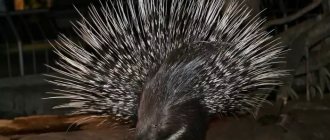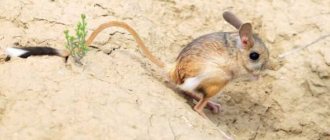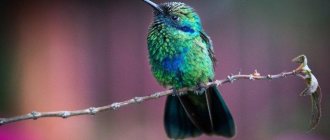Review author: “ZooVita”
Until recently, cats, dogs, and, in rare cases, hamsters and rats were considered pets. But everything in the world is changing, and now the most exotic animals live in apartments. But if all sorts of crocodiles and ferrets are not attractive, then the charming gerbil mouse would be a good option.
Description of the animal gerbil
Gerbils are slightly larger than ordinary mice and hamsters. It is often confused with the rat, which is its closest relative, but unlike these rodents, the gerbil's body is covered with fluffy fur, and there is a cute tassel at the end of its tail.
The height of the mouse varies from 5 to 20 centimeters. The weight of small mice is 15 grams, large mice can grow to 100-200 grams.
Gerbils have a wide variety of colors, obtained through selective breeding, but most often there are animals with a brownish-sandy or brown color, which served as an excellent camouflage among the sands of Mongolia.
The rodent is practically defenseless against predators, so nature gave it acute hearing, excellent vision, quick reaction and strong hind legs to quickly notice the danger and have time to escape.
This subspecies of mice leaves virtually no unpleasant odors, which makes them even more desirable inhabitants of city apartments.
Choosing a pet
You have bought everything you need for care, allocated a place for your new pet, and now it’s time to move on to the most important thing - choosing the animal itself. First, let's take a look at the breeds. There are already more than 110 species of gerbils; we will focus on the most popular.
Gerbil breeds
Mongolian, aka clawed . The most common inhabitant of houses and apartments. The color of the coat is from coal black to snowy white - the breeders took care of diversity. There are even bluish shades. It grows up to 20 cm in length, weighs about 120 g. There is often a small tassel at the end of the tail.
Color options for the “Mongols” can be seen in the video below. But please ignore the advice that it is better to feed the rodent more often with sweets and tropical fruits.
Fluffy-tailed . This species is captivating with its chic tassel on the tail. In stores you usually only find the sand color. Length 10-13 cm.
Fluffy-tailed. This is a tail you can be proud of!
Short-eared . Red or brownish, white belly. Grows up to 12 cm.
Short-eared, but very cute.
Cheeseman's gerbil grows up to 11 cm, with a long tail. The most interesting feature is the huge (relative to the head) eyes.
You can drown in such eyes... Cheeseman's gerbil.
Persian . Quite a large individual (can grow up to 20 cm and gain weight of 170 g). Has a beautiful tassel at the end of the tail.
Persian beauty.
Let's go buy
Where to buy animals - from breeders or in a store - is everyone’s personal choice. We do not agree with the opinion that stores provide poor care and often sneak in already sick animals. Choose a store that is trusted (fortunately, reviews can be found on the Internet without any problems). In a good store and good care. At the same time, we met with private breeders who kept their pets in terrible conditions and tried to sell old gerbils or the wrong sex. Therefore, it does not matter where to buy, but make preliminary inquiries about the seller.
Below are the main points to pay attention to when purchasing.
- If you are going to take pets of different sexes, it is advisable that they be from different parents (to reduce the risk of genetic diseases).
- It is better to take same-sex dogs from the same litter so that they are already accustomed to each other.
- It's great if you can look at your parents. It will be immediately obvious whether they are active or lethargic, friendly or aggressive. Offspring are likely to inherit character traits.
- The best age to buy is 6-9 weeks. If you have no experience, it is difficult to determine age. Bring experienced gerbil keepers with you if possible. If not, rely on reliable sellers.
- Eyes, ears, nose should be free of discharge and inflammation.
- The coat should be smooth, clean and not matted anywhere (feel free to look under the tail).
- There should be no scratches, wounds or rashes on the skin.
- Listen to your breathing, usually if there is wheezing, you can hear it.
- A healthy gerbil is active and inquisitive, but if the animal is lethargic and does not respond to you, then it may be sick.
We are already waiting for new owners :)
Determining gender
Determining sex at such an early age (6-9 weeks, as we recommend for purchase) is difficult, but there are still signs.
If the age is closer to the upper limit, then in males, when you lightly press on the belly, the testes (testicles) protrude. By the way, this is one of the ways to check age, because... They will not perform for very young boys.
Another way. The distance between the anus and the genitals in females is much smaller, literally millimeters. Males have much more.
Habitat of the gerbil
Under natural conditions, gerbils live in the steppes of Mongolia (where their name comes from); they are also found in China, India, Asia, and North Africa. Among the less exotic places of stay are Transbaikalia, Ciscaucasia, and Kazakhstan. So the question “where do gerbils live” has many possible answers: small animals have remarkably adapted to life in steppes, semi-steppes, deserts and semi-deserts.
However, you don’t have to travel to buy a pet rodent; it can be purchased at almost any major pet store or from breeders. The second option is considered more preferable.
How to teach to hold hands and play
The most inappropriate thing about hand training is rushing. Be patient and do not pick up the animal at all for the first few days. After 3-4 days, try hand-feeding. Once the gerbil understands that you are not threatening it, it will calmly begin to eat in your hands.
Approach and stand so that no shadow falls on your pet - he may instinctively mistake you for a predator.
The next step is to start picking it up. We carefully place both palms under the pet, closing them from below in the form of a boat, and then lift it up. Be careful, gerbils do not sit still, she may try to run away and get injured.
Never pick up a gerbil by its tail, as it may break.
As soon as the animal stops being afraid of you, everything will go by itself. He will come running to you, climb into your sleeves and trouser legs, onto your shoulders and even onto your head. This is a very inquisitive and playful animal. During such games, never scream or frighten your pet - he may bite out of fright.
Gerbil character
Mice are particularly clean, friendly and inquisitive. The favorite pastimes of small animals will be all kinds of outdoor games: they love ladders and steps, small plastic and rag balls.
As can be seen in numerous photos of gerbil mice, they love to rise on their hind legs, examining the surroundings. They can jump high and are always ready to escape from the cage to fully satisfy their natural curiosity. They are not at all afraid of people and willingly make contact, but they do not like to be held in their hands for a long time, squeezed or stroked, limiting their freedom. They are too restless for this.
Gerbils are active during the day, so they will not interfere with night rest. In winter, animals can hibernate.
Their easy-going nature allows them to quickly win the love of all household members or become a favorite guest of the living corners of kindergartens, schools, stations of young naturalists and other zoological circles.
Gerbils do not really like being alone, so they are usually purchased in pairs (two brothers or two sisters) or as a whole family. It is not recommended to add new rodents to existing pets: the old-timers will show their character at first by beating up the newcomers.
Behavior at home
Most species of gerbils sleep at night and are active during the day. But not all of them, so you can buy an animal that will not give you rest at night. Check with the seller what time of day rodents sleep.
It’s not for nothing that we mentioned activity - gerbils do not sit still. They are always in motion: you are unlikely to be able to hold them in your arms and stroke them for more than a few seconds (unless, of course, you force your pet, but this cannot be done).
Owning a gerbil is worth it for those who agree to watch the rodent more, rather than “squeeze” it.
However, gerbils have a very friendly nature. They get used to the owner and his voice. They can be litter trained and played with.
The animal treats people well.
We train to the toilet in several stages (select only one individual and train it immediately).
- When the gerbil has gone the wrong way, we take the balls of excrement and put them in the tray. We look at the reaction: if the toilet still does not attract rodents, move on to the next step.
- We keep an eye on the rodents, and as soon as we see that the pet has sat down to “go big,” we carefully pick it up and carry it to the tray. This requires patience and it won’t take you to get the hang of it right away, but it works. And it’s easier to care for the animals later - the time spent is worth it.
- If you manage to train one pet to use the toilet, the rest usually begin to repeat its actions. But if individual individuals “fundamentally” do not want to live in a “civilized” manner, repeat the steps for them separately.
Another important point: gerbils in nature live in large colony families, so they feel much better in company. The owner cannot replace their relatives, even if they devote a lot of time to caring for the pet and playing.
Keep your gerbils at least two at a time. If you are not going to breed them, get all females.
Animals should be together since childhood. If you later try to add a third animal to an already living couple (in a month, for example), they will not accept it.
A little about the relationship between gerbils. Sometimes they may struggle a little, but that's okay. But if the fight leads to blood, then immediately seat your pets. Not for long, for a few hours (you can’t separate for a long time, so as not to forget each other’s smell).
Now a little about the negative aspects of keeping gerbils.
They chew all the time. They chew everything they come across, so make sure that it is not your furniture (more on that below). When gerbils are not gnawing, they are digging; therefore, dirt is guaranteed (but this is not a problem if you choose the right house: we will tell you how to make cleaning easier).
Males also mark territory. Of course, the “amber” is not like the March cat, but keep this in mind. Females can too, but this is less common. There is no need to worry about this: gerbils have very little odor (less than, for example, hamsters).
Where do gerbils live?
For a comfortable living, the gerbil will need a spacious cage, or better yet, a large terrarium or aquarium. High glass walls will protect people from the noise made by the fussy inhabitants, and the floors will protect from debris that will certainly fly from the gerbil’s house.
If preference is still given to the cage, then it will have to be equipped with a high tray so that the bedding does not fall out.
For a low cage, you will need a lid so that the animal cannot get out into the wild simply by jumping up and down. But at the same time, the mice will need a constant flow of fresh air, so a hermetically sealed lid will not work.
Sawdust, hay, and straw are used as filler. They are poured onto the floor in a layer of 15-20 centimeters so that the pet can happily dig passages and build holes.
A separate bowl of sand is used as a toilet.
You should not buy houses with high shelves or dwellings consisting of several open floors: the rather fragile bones of the animal easily break when falling from a height, just like its fluffy tail.
To release excess energy, you need to install a wheel and install small ladders, and for a quiet pastime you will need a cozy house or a small box where the mice will make a cozy nest for themselves.
Driftwood or twigs will help kids clean and grind their teeth.
Pet diseases
Gerbils tend to be in good health compared to other rodents, but it doesn't hurt to be aware of common diseases and their symptoms. Do not self-medicate - immediately contact a veterinarian (a rodent specialist is called a ratologist).
- If the eyes are watery and purulent, then it is most likely conjunctivitis. Protect the animal from dust, hide it in a house out of direct rays of light, and as soon as possible, take it to the clinic.
- Nasal discharge may indicate an allergy. Just in case, immediately change the type of bedding, think about what in the diet could give such an effect. If there is no change in a couple of days, call your veterinarian.
- If the belly suddenly begins to increase in size and does not go away, all this is accompanied by diarrhea (i.e. it is not bloating), then this may be Tyzzer's disease (fluid accumulates in the abdominal cavity). The reason is missing food. Most often, there is nothing you can do to help here, so make sure the food is fresh and the house is clean.
Gerbils also suffer from epilepsy and cancer, but in these cases little depends on us.
Regarding vaccination. There are no special medications for gerbils. But if your pet does not come into contact with other people’s rodents, then there is nothing to be afraid of.
Gerbil Walks
A short walk around the apartment will only benefit the gerbils. But at the same time, they should always be supervised: having found a secluded corner, mice may consider this their new home, from which it will be difficult to remove them.
The love of gnawing everything that catches the eye can lead to the death of an animal left without supervision.
Relationship with a person
Currently, gerbils are actively used by humans as pets, as they adapt well to captivity and are quite tame.
In order to choose a gerbil for yourself, it is important to know what the different subspecies look like. To do this, we recommend looking at photographs of gerbils. This will make it much easier to choose your favorite from the animal world.
Nutrition for the pyschanka
It is recommended to feed gerbils three times a week, and they do not need special bowls at all. Food can be placed directly on the bedding. They try to make portions so that they are enough for one time, otherwise the food will lose its attractive appearance, produce juice, and increase humidity, which desert inhabitants do not like. In addition, mice will try to hide uneaten reserves in the litter.
There are no drinking bowls in the cage, and the baby will receive the necessary moisture from fruits and vegetables.
The best option would be a ready-made mixture for rodents. Adherents of homemade food give their pets boiled eggs, vegetables, fresh fruits or soaked dried fruits, nuts, cottage cheese, white or gray crackers. But the pieces must be small in size so that the mouse can enjoy eating.
Fresh greens will be an excellent addition to the diet: leaves, twigs, grass, sprouted sprouts.
It is forbidden to give citrus fruits (due to the pungent odor), salty, peppery and sweet foods, potatoes and cabbage.
Reproduction
Before buying different-sex gerbils for breeding, pay attention to this fact.
A gerbil can give birth to an average of 5-6 babies every month. Total for the year is 60-70. And this figure does not take into account that the offspring will also begin to bear offspring in 3-4 months if you do not have time to distribute them to new owners.
Therefore, if you do not have a sales market, we do not recommend taking different sexes. But if you still decide, read the information below carefully.
Every birth you will find 4-7 such “surprises”.
When can I knit?
Gerbils reach sexual maturity 3-4 months after birth. All that is required of you is to place individuals of different sexes in one cage, then nature will do its job.
It is advisable to mate the female before reaching the age of 1 year. If the girl is over 20 months old, childbirth is strictly not recommended.
How long does pregnancy last
The duration of pregnancy in gerbils is 24-28 days. The older the mother, the longer she bears the offspring. When breeding without control, it happens that the female becomes pregnant already while feeding previous children. Then she can wear it for up to 40 days.
Signs of imminent labor
Before giving birth, the female begins to arrange a secluded nest and most often becomes calmer and less active. At this time it’s time to stop caring for the house, just add food.
Newborn care
Both father and mother participate in caring for the babies, so it is not necessary to remove the male. In the first two weeks, it is better not to touch the little ones at all. Afterwards you can determine the gender. After another month (i.e. at the age of 6 weeks), begin distributing the babies to new owners.
Did you like the article?
If the material was useful, share it on social networks (buttons below), it will also help someone else. If we forgot something or you have questions, write in the comments, we will try to add everything to the article.
Photos of all types of gerbil
Owner reviews
It is interesting to watch gerbils (they spin a wheel, rummage through sawdust, run through tunnels), but it is impossible to stroke or cuddle them: they are very nimble and jump out of your hands. Gerbils eat little and can feed on dry rat/hamster food. It is better not to keep them in cages - there they clump the fur on their noses and produce a lot of noise and debris. If you install a wheel, then only a metal one made of durable mesh; the house is made of ceramic.
Gerbils do not tolerate humidity: they cannot be washed, but you need to buy sand for chinchillas and pour it into a ball vase, where the mice will tumble, cleaning the fur . Some owners install ball drinkers, believing that the pet should still have access to water. By the way, many gerbils bite quite noticeably, biting into your finger until it bleeds. But the biggest drawback of the gerbil is its short lifespan.
Spreading
The habitat is located in Northern Sahara. The fat-tailed gerbil lives in Libya, Tunisia, Algeria and northwestern Egypt.
The rodent inhabits sandy layers with sparse vegetation located in rocky areas of the desert. It strictly avoids the more fertile coastal deserts of the Mediterranean.
In Libya it is also common in the transitional deserts that run roughly parallel to the coastal plains. Its population density is extremely uneven. In Egypt, its range overlaps with that of the Sundevalla gerbil (Meriones crassus) and pygmy gerbils (Gerbillus).











